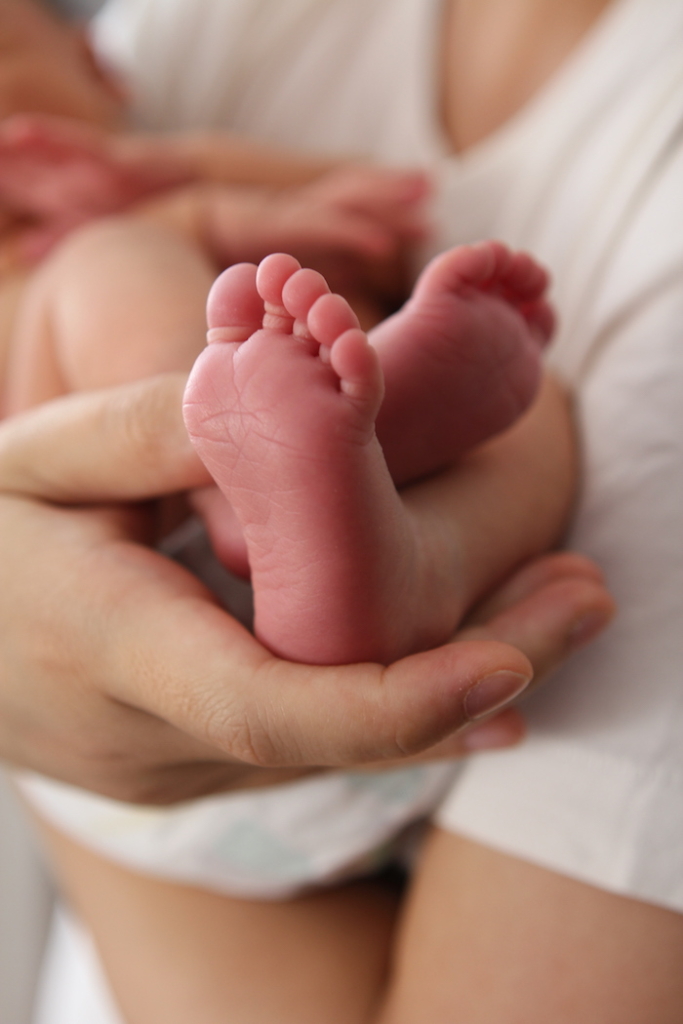AUTHOR'S NOTE: This is the first post of a three-part series of how little bao came into the world, and the days following his arrival. Just a warning: It's a lengthy one. The last word count of the total story is almost 12,000 words, but I'm hopeful in sharing mine, others can learn from it, or realise that they are not alone.

Where to begin?
I believe all women have their own birth stories, one that is usually not shared to those apart from close friends and families, and justly so—after all, it is private, and if you’re not a parent, you might need a medical degree to fully understand what mothers are going through.
It begins, perhaps, with my diagnosis of Gestational Diabetes Mellitus (GDM). No longer classed as a routine pregnancy, my obs mentioned straightaway that usually those with GDM are not encouraged to go full term (40 weeks) due to the risks—bigger babies, placenta deteriorating, and so on. If you require insulin throughout pregnancy, it means an even earlier delivery—up to three weeks—depending on the situation. I walked out of that appointment with 37 weeks as the goal: As long as I get to 37 weeks, little bao will be classed full term, and if he needs to be born early, he will be okay.
I was fortunate enough to be able to go through the whole pregnancy diet controlled. Apart from a few bad weeks (and a few very bad days), my sugar level was normal. Ultrasound after ultrasound showed that bao was thriving, albeit on a higher percentile.
Then 37 weeks hit. I thought, then, that I could go all the way to 39 weeks. But during my routine appointment that week my obs told me that she had scheduled an induction for the next Friday, when I’d be 38+4, as there were too many induced-to-be mums the week after due to Easter. And she didn’t want to wait until after Easter, as I’d be 40 weeks then.
I was conflicted. Deep down, I wanted my body to go naturally. I wanted little bao to be ready, for my body to be ready. But rationally, I wanted what was best for bao, so I agreed to the induction, as I trusted my obs. In hindsight, I was still a tad skeptical as my induction was technically ‘moved forward’ a week due to hospital availability and Easter long weekend. But I played my odds. During the last check-up before the induction, my obs did an internal (it’s much worse than a pap smear by the way) and found out that my cervix was ready and bao’s head was already down. She did a stretch and sweep then and there. Maybe, just maybe, little bao would be ready in time after all.
In the days leading to the induction, I tried all kinds of exercises, hoping for my water to break, to feel that contraction. But bao was stubborn. He just didn’t want to be born. Yet.
I arrived at the hospital on that Friday morning at 6.30 am, where I was already two cm dilated. I registered at the reception desk and was prepped. My water was broken (it was much better than the first internal) and I was put on the drip. The next three hours was manageable, but suddenly my contraction pain went from being level three to level ten. I tried the gas, and the midwife cranked the dose up, but I literally felt nothing (zero effect, zero nausea, zero anything). After two more contractions, I was begging for an examination, thinking that I really couldn’t cope if labour was still a long way away.
Yeap, I was still four cm. It was time for an epidural.
I was one of the lucky ones—the anaesthetist was in the room within five minutes, and she took another fifteen minutes to get ready—but believe me, it felt like a lifetime. The pain of contraction was like, well, for a lack of better word, hell-ish.
It hurt, way too much.
I thought I had a good pain tolerance, but boy was I wrong. Then again, I was on the drip instead of going naturally, and everyone said it could ramp up the pain pretty quickly. I felt like giving up; with every fibre of my being I truly believed I couldn’t go through even one more contraction. Everything I have read about labour and breathing technique—all those talks about my body is made to withstand childbirth—well, all gone. The midwife touched my shoulder, reassuring me that I would be pain-free soon. I was too much in pain to ask how much longer in a cynical tone.
The only thing that got me through, somehow, was my husband, holding my hand, patting my head, reminding me to breathe.
The epidural needle didn’t hurt; it was just uncomfortable. It took another fifteen to twenty minutes before the drugs kicked in, but even then I still had localised pain on the left side of my perineum, instead of being numb-but-can-still-feel-the-contraction the whole way. My midwife called the anaesthetist again, but after a while it was apparent she couldn’t come as she was stuck in an emergency c-section. (Thank goodness I asked for mine before whoever it was that needed the drugs more than me.) After getting a bit more dose for a while, I was finally comfortable.
Really, epidural was bliss.
At around two o’clock, my midwife told me that I was around seven cm dilated, so it would take a few hours more to get to 10. My obs would likely come back to check on me at four, so the lights were turned off, the noise from the monitoring machines turned down, and I tried to sleep, conserving my energy to push later on.
Ten minutes before three o’clock, my obs came.
It seems that the baby is unhappy, she said. She swiftly did an examination. My husband told me later that she had a surprised look in her face, as if thinking what to do next, and said that she could feel his head. It is time to push. Little bao was coming, and he needed to come out, quickly.
My midwife came into the room seconds after, picking up the distress in the baby’s heart rate monitor, followed by another midwife that was called to assist. I was told to move into position—my obs downed her white surgical gown and everyone prepped everything very quickly. One minute I was half-sleeping, the next minute I was pushing. She guided me on when to push, as I couldn’t feel much down there, and after a few pushes, it was clear that bao was not coming fast enough. She told me that she needed to do an episiotomy and used vacuum to help birth the baby—little bao really needed to get out. I pushed, but I noticed that one of the midwives started making mistakes. She was nervous, and she took a few times to prep the leg contraption thing to put me into a better position to push. The other midwife apologised to my obs as she brought the wrong equipment, but my obs was still cool as a cucumber.
My obs directed the midwives on what to do and what she needed; she told me that I was doing a good job pushing, to keep on going. My husband told me to breathe. Oh, the poor guy—he didn’t know where to look. Your face was red-blue, he later said. But down below the scene was even more chaotic.
Looking back, the situation was probably more serious than what I had thought at the time.
I pushed, although I really didn’t know how, nor did I know whether I was giving it my all. Nineteen minutes of pushing felt like another lifetime, as I was praying with every push that bao would come out. Halfway, my obs told me that bao had turned sideways, and that she needed to turn the baby to the right position for the birth. Another push.
There’s a cord wrapped around his neck, my obs said, that’s why he’s unhappy. Another push. He was still not coming. Push, Marcella, another one! The head is almost out! Look! At this point, my squeamish husband finally looked, and was promptly traumatised from seeing bao’s head as my obs untangled the cord around his neck. The midwife pulled down my robe so he could be put on my chest to do skin-to-skin straightaway. My obs told us to not be alarmed if the baby didn’t cry straightaway after being born.
Take a deep breath. Now push! She said. Nothing. And push!
And then he was born.
It was the feeling of something slipping—something big, and slimy, then something small, and long, and never-ending.
Little bao cried straightaway. Like a champ. His head was bruised and battered—there was an angry, red oval-shaped cone with dried blood where the vacuum helped him earthside. But he was crying.
All in nineteen minutes.
I needed stitches, and holding my son for the first time, I remember bits and pieces of conversation. There was talk about significant blood loss. The midwife mentioned a figure—was it 600 or 700 mls? All I know that it was more than normal. That it was a lot. More drugs administered.
Marcella, push one more time, my obs said, we need to deliver the placenta.
Yes, episiotomy was performed, she said. The baby’s head is oval-shaped at the moment, but it would heal very quickly. See, it’s changed already. Yes, baby is well. Baby is healthy. He was in the wrong position. There was a cord around his neck. Oh, good job pushing hard enough for the vacuum to work, otherwise it would be c-section and preparation would be longer.
And who knows what could have happened.
Honestly, during those first minutes with my son in my arms, I was numb. I wasn’t even elated or overjoyed—I was shocked. Shocked that it happened so quickly. I looked at my baby, and was grateful that he was here now, warm, squirming, safe and sound in my arms, but was numb nonetheless.
The processing, the guilt, and the regret came afterwards, in crashing waves that hit without warning, again, and again.










